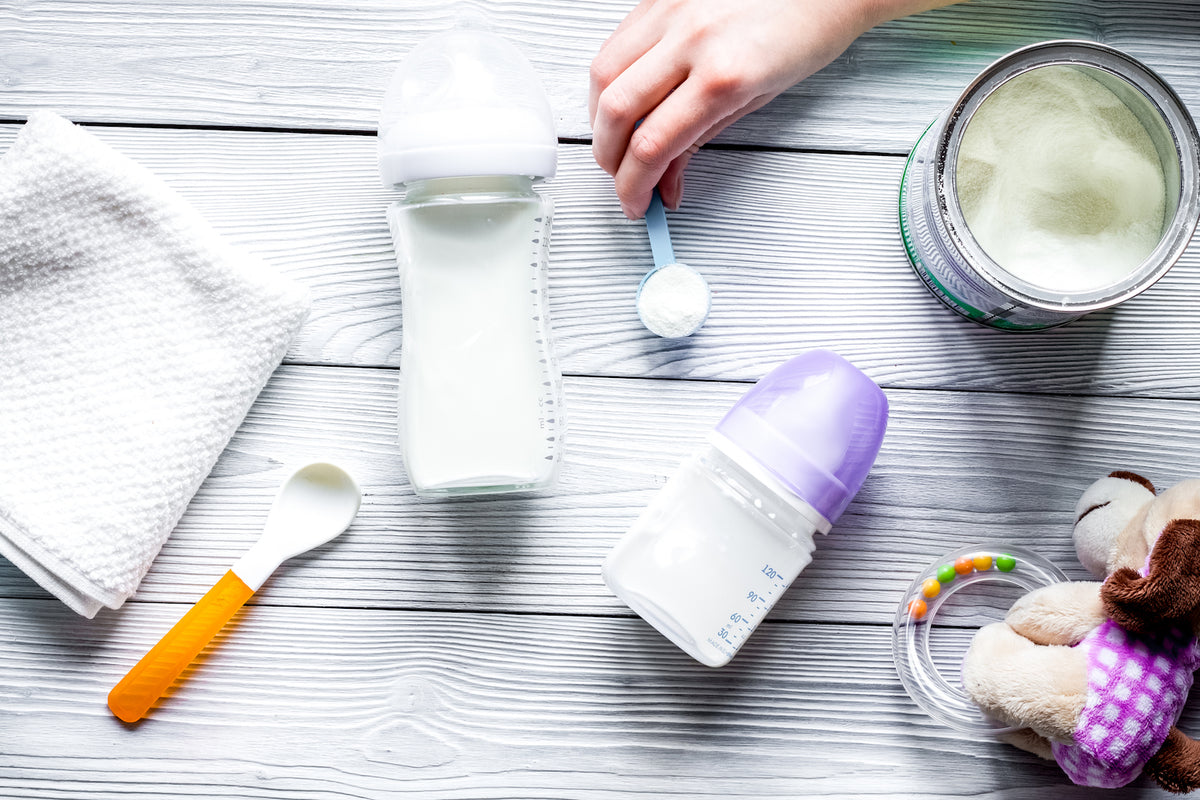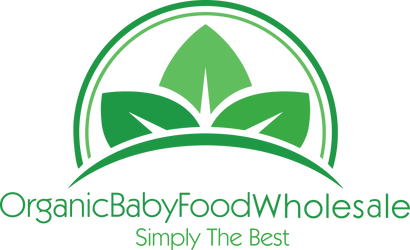
What's in Baby Formula?
Millions of babies are fed with formula every day. It’s the sustenance they live off of in the early months of life — but have you ever wondered what exactly is in it? What is that powder mixture actually made up of? We took an in-depth look at what’s in baby formulas and, although specific types vary, there is a basic make-up that’s pretty universal. Read on to learn the ingredients in baby formula.
As you can see, baby milk formula ingredients vary widely — and each one serves an important purpose. Checking the labels on baby formulas is incredibly important to provide little ones with the best option available. Feel free to reach out to us in the comments below with any questions you have about what’s on baby formula labels.
Protein
A large portion of baby formula ingredients is made up of proteins extracted from cow’s milk. So why not just use cow’s milk then? The proteins found in baby formula have been specially treated to be more easily digested by tiny tummies. These proteins help babies’ brain, bone, and muscle development. Once ingested, our bodies break down proteins into amino acids that create enzymes, hormones, and antibodies to fight against infections and allergies. These are critical functions for a baby’s tiny body, which is why choosing a formula that contains high-quality protein is so important.Fatty Acids
We all know the higher the fat content of our milk, the tastier it is — and the same applies to baby formula. The fats contained in formula are easily digestible vegetable oils like palm oil, sunflower oil, and rapeseed oil. Many formulas also include the fatty acids DHA (docosahexaenoic acid) and ARA (arachidonic acid). These help with mental development and vision among other things. Some formulas derive these fatty acids using a petroleum derivative called hexane. However, hexane is also used in gasoline and glue. Look for brands like Holle, Lebenswert, and HiPP that don’t use hexane in the production of their formulas.Carbohydrates
Carbohydrates (or sugars) provide energy, which is something that growing babies need plenty of. If you’ve ever wondered why corn syrup is the first ingredient in some baby formulas, it’s because babies need lots of energy. However, corn syrup and other added sugars are unfortunately used in many formulas. These are not the only option, though. Look for formulas that use only organic lactose, which is what makes breast milk sweet.Micronutrients
Babies change and develop enormously over the first weeks and months of their lives. This is why baby formulas are available in stages. The different stages are specifically designed to fit the needs of each age range, whether the formula is going to a newborn or to a 20-month old. The nutrients found in each stage differ, but generally contain a combination of the following: Vitamins A, B, C, D, E, K, Potassium, Calcium, Fluoride, Selenium, Manganese, and Iodine. Each one serves a specific purpose in helping babies’ development.- Vitamin A aids in vision and skin
- Vitamin B supports the nervous and immune systems as well as cell growth and muscle tone
- Vitamin C helps with the absorption of iron
- Vitamin D aids in calcium absorption
- Vitamin E is an antioxidant
- Vitamin K supports normal blood clotting
As you can see, baby milk formula ingredients vary widely — and each one serves an important purpose. Checking the labels on baby formulas is incredibly important to provide little ones with the best option available. Feel free to reach out to us in the comments below with any questions you have about what’s on baby formula labels.
Also in News

Best Organic Formula for Gassy Babies
We all know that crying is a normal part of being a baby. But sometimes, this crying reaches the next level. In many cases, babies' screams may be caused by the discomfort of gassiness. Did you know the type of formula fed to a baby can help relieve pain? Read on to learn which formulas are best for gassy tummies.

Lebenswert Formula Instructions in English
Have you ever prepared a baby’s bottle? While it’s not a complicated process, it may take a little getting used to. We’ve got a simple guide right here for the perfect baby bottle every time, whether for Lebenswert formula preparation or for another formula brand.

Holle Formula Instructions in English
The Holle company is based in Germany and naturally, their packaging includes instructions written in German. Unless you’re fluent in German, it’ll be a challenge to figure out what to do. Fortunately, we’ve got you covered with a quick how-to in English right here!

